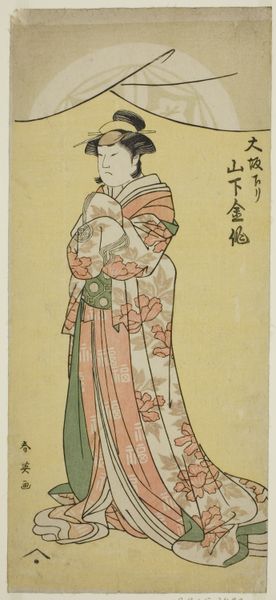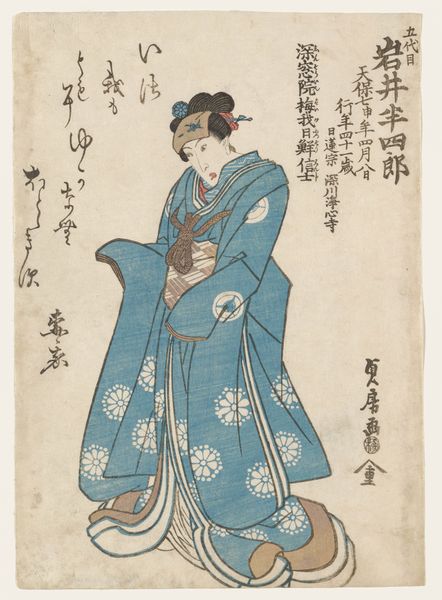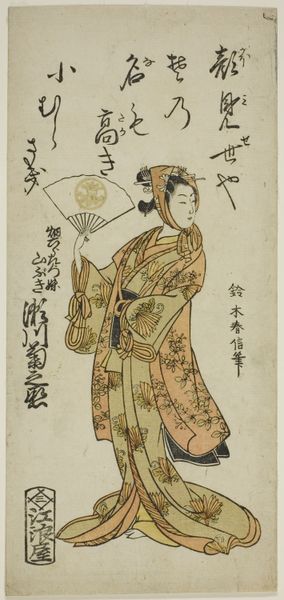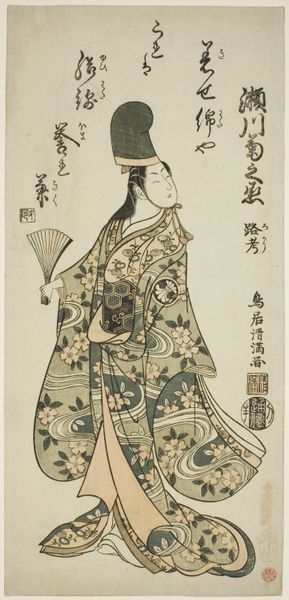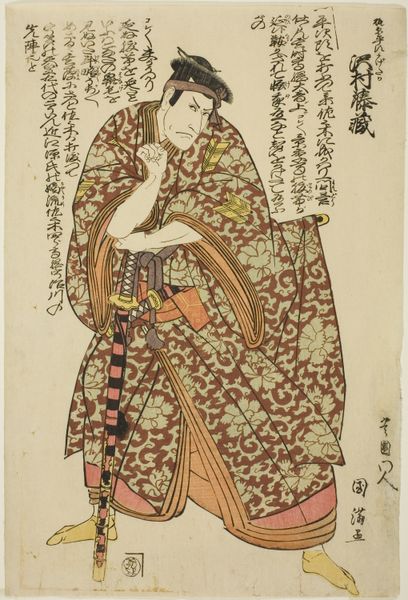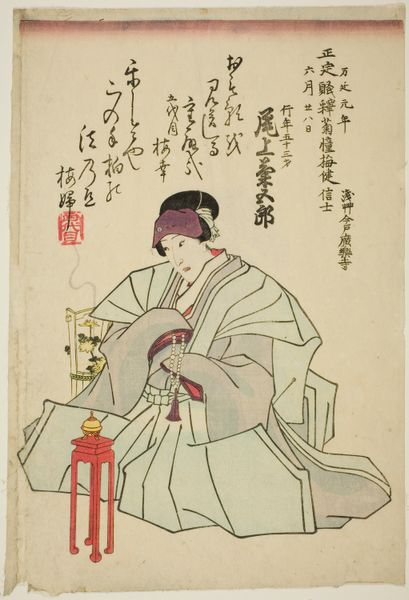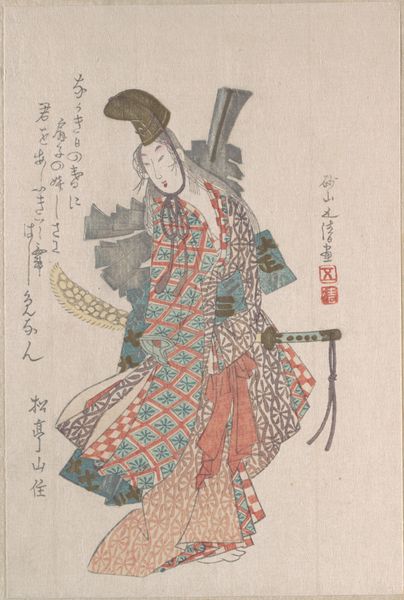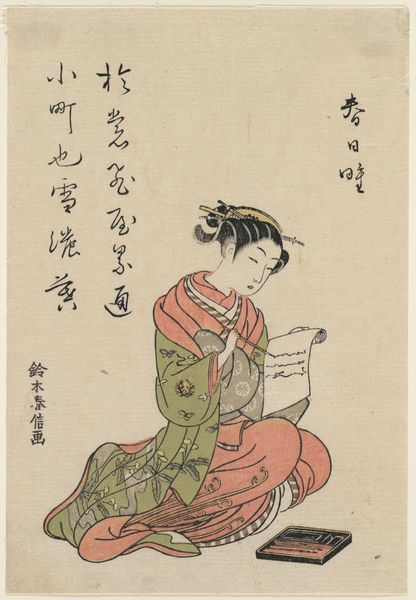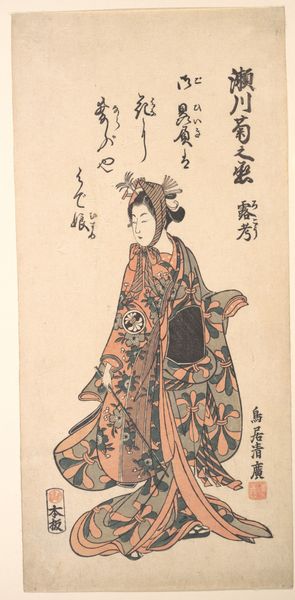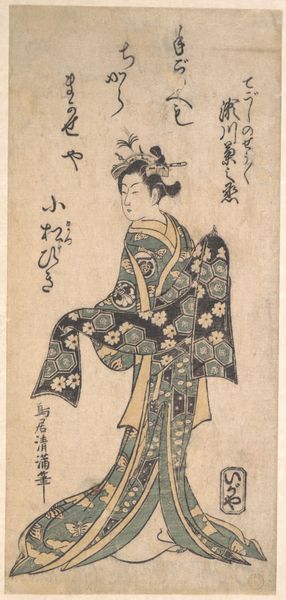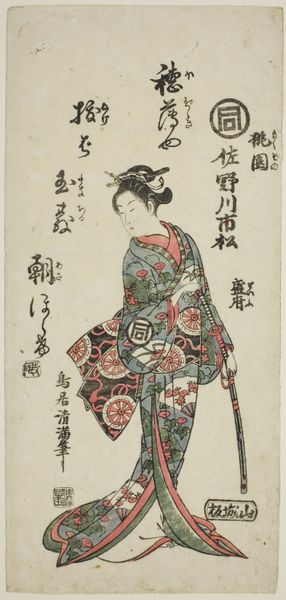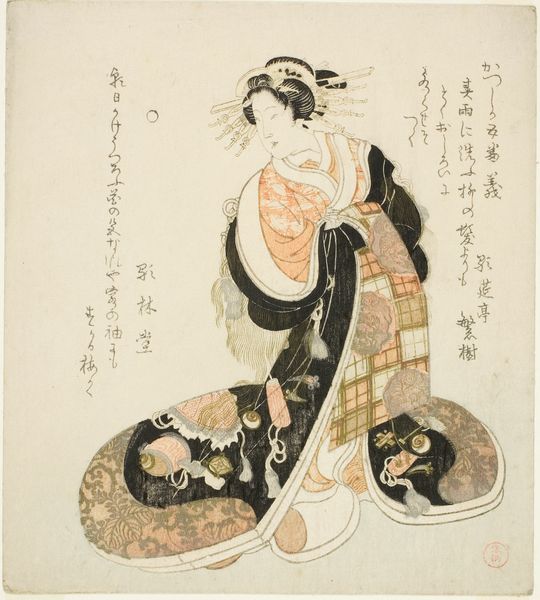
Memorial Portrait of the Actor Ichikawa Monnosuke III 1824
0:00
0:00
print, paper, ink, woodblock-print
# print
#
asian-art
#
ukiyo-e
#
paper
#
ink
#
woodblock-print
Dimensions: 36.2 × 14.9 cm (14 1/4 × 9 13/16 in.)
Copyright: Public Domain
Curator: Looking at this print, I immediately feel this sense of quiet reflection, almost sadness. It's in the posture, the downcast gaze... there's a gentle weight here, wouldn't you say? Editor: Absolutely. What you're sensing speaks directly to the commemorative nature of the artwork. This is Utagawa Toyokuni I’s "Memorial Portrait of the Actor Ichikawa Monnosuke III," dating back to 1824. It is currently held at the Art Institute of Chicago. It is a woodblock print using ink and color on paper and serves as a poignant cultural artifact, a "ukiyo-e" print. It exists at the nexus of artistic expression and memorial. Curator: A memorial! Now the sorrow makes perfect sense. I can imagine how grief and admiration might swirl when remembering an actor so vividly. It almost feels like I can glimpse into his heart or the legacy he left. Do you think the gentle pink colors add a touch of sweetness amidst grief? Editor: Yes, that soft pink robe with the water and floral motifs softens the edges of death while still hinting at worldly existence. Think about the social context here; Kabuki actors, while popular, often existed on the margins of society. Memorial prints like this were powerful acts, enshrining their cultural significance and providing some form of immortality for the actor within the broader cultural imagination. The inscription to the right includes biographical information on Ichikawa Monnosuke III. Curator: So this portrait served as both a memento and an act of resistance, perhaps? Given his position on the margins, commemorating him normalizes his existence, while enshrining the fleeting nature of fame itself. And to think all these complex ideas could spring from an image! Editor: Precisely. These prints circulated widely. This wasn’t just a private mourning; it was a very public statement. Understanding this provides insight into socio-cultural acceptance of actors, theatre as an art form, the ephemeral nature of performance, and death. Curator: So we have an artwork that speaks to remembrance, fleeting beauty, social status, and cultural shifts. Not bad for a single image! It gives me a fresh view on Ukiyo-e prints in general. They're more than pretty pictures, they capture entire worlds. Editor: Agreed. Examining the cultural significance and intersectional nature of Utagawa Toyokuni's artistic endeavors really encourages us to consider how artistic portraits are never only portraits, but multifaceted artifacts laden with nuanced meanings.
Comments
No comments
Be the first to comment and join the conversation on the ultimate creative platform.
